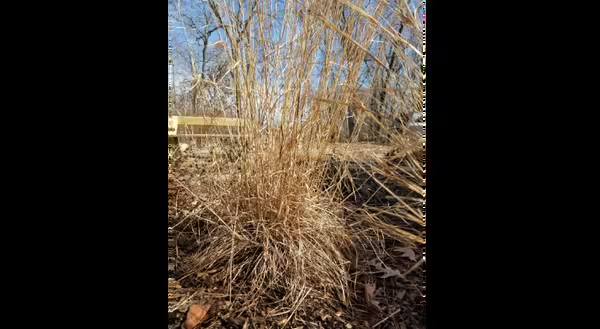
This past week’s warmer weather has been an exhilarating blast of spring when contrasted with the icy, extreme cold just one week earlier. The warmup has spurred many of us to get back out in the garden to start getting ready for spring. While our landscape beds and gardens will be places of burgeoning spring beauty as plant life begins its annual revival in the coming weeks, they are also ecological hotspots of awakening spring life in the insect world.
Insects use our garden plants to overwinter in an amazing array of uses and various stages of life. While some are able to hunker down for winter as adults, others seek refuge as larvae or eggs using a wide variety of plant materials and garden spaces as host. Our cleanup activities this spring can have an alarming impact to insect life if care isn’t taken to accommodate these winter garden dwellers.
I know that we all really want to start getting a leg up on garden chores this time of year in anticipation of the heavy workload the growing season will bring, but spring is actually a time for pause as we anticipate the awakening natural world.
The best plan for spring cleanup is to hold off until temperatures are consistently over 50 degrees overnight. These warmer temperatures will spur insect eggs to hatch and larvae to emerge that overwintered in standing dead stems. Butterflies and moths in chrysalises that cleverly mimic plant parts or get neatly tucked away in leaf litter will come out as temperatures rise. Many species of native ground nesting bees will begin to emerge from our soil and start their life processes and standing dead stems that remain in the garden are valuable for nesting bees that will seek out hollow stems in spring.
For many, the cessation of early spring garden work is a welcome suggestion. It pays to take some time and enjoy the wonderful display from early spring wildflowers in our local natural areas, save the garden work for later.
However, I do get a lot of questions this time of year from gardeners that would like to start some cleanup and wonder where the line falls between too much disturbance and some reasonable beginnings of garden cleanup. Typically, my first suggestion is to take a targeted approach. Start by cleaning up a few key, highly-visible beds (like the one right by the front door) and leave the rest for later. Within individual garden beds, edges can be cleaned up, while leaving the less visible center or back for later.
For any materials that you do remove now in the way of dead stems, leaves, or fallen limbs and twigs, find a place to loosely stack them in the hopes that insects may still emerge. Densely piled materials can begin the process of decomposition and kill or trap insects. Once warmer weather sets in and insects become active, these materials can then be composted or removed, so a loose stack or multiple stacks are essential. Better yet, use some of these materials as loosely stacked, natural mulch by leaving them at ground level near where they were standing.
Standing dead stems provide overwinter habitat, but also work as nesting resources for emerging insects. If you must clean priority areas now, cut dead stems back to a height no shorter than 15 in and leave them. If some stems or flower structures are bent over on the ground or broken, it’s pretty safe to remove those now and their removal can make a dramatic visual improvement.
While I am anxious as anyone else to refresh mulch ahead of early season weed pressure, a delay in mulch addition can really benefit ground nesting bee species. They need a more open soil surface to emerge and begin their life processes, so save mulching for later in the season. Mulch can be targeted in its application to areas that really need it. Perhaps the area beneath larger plants doesn’t require mulch since shade adequately suppresses weeds. Leave those spots bare for the native bees that need it.
Although the best strategy by far is no spring cleanup, some careful and thoughtful cleaning with insect needs in mind can be reasonable approach to striking a balance. There will always be time during the growing season to complete the job once our insect friends have made their appearance for the year to fill their vital role in the natural world.